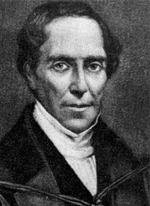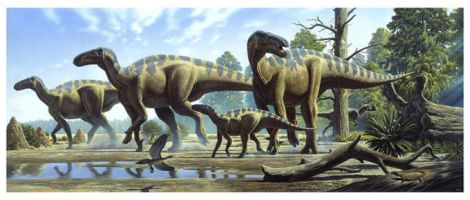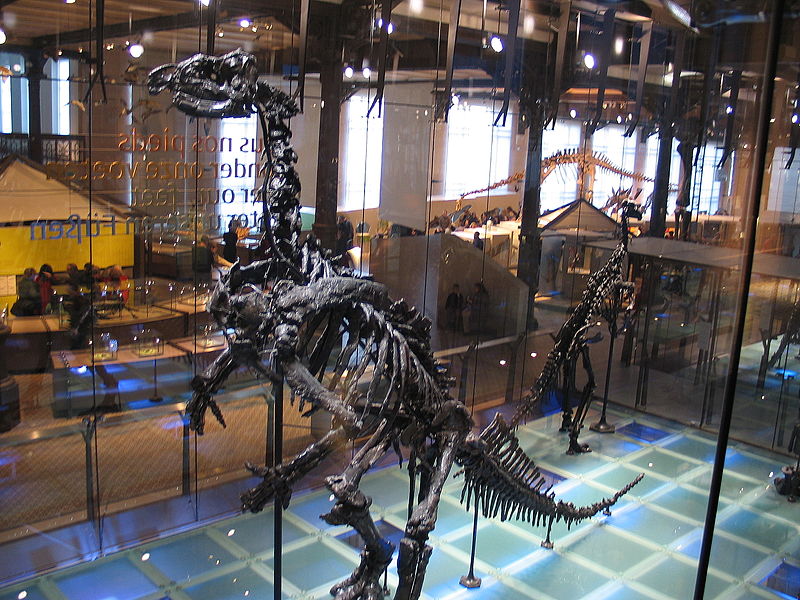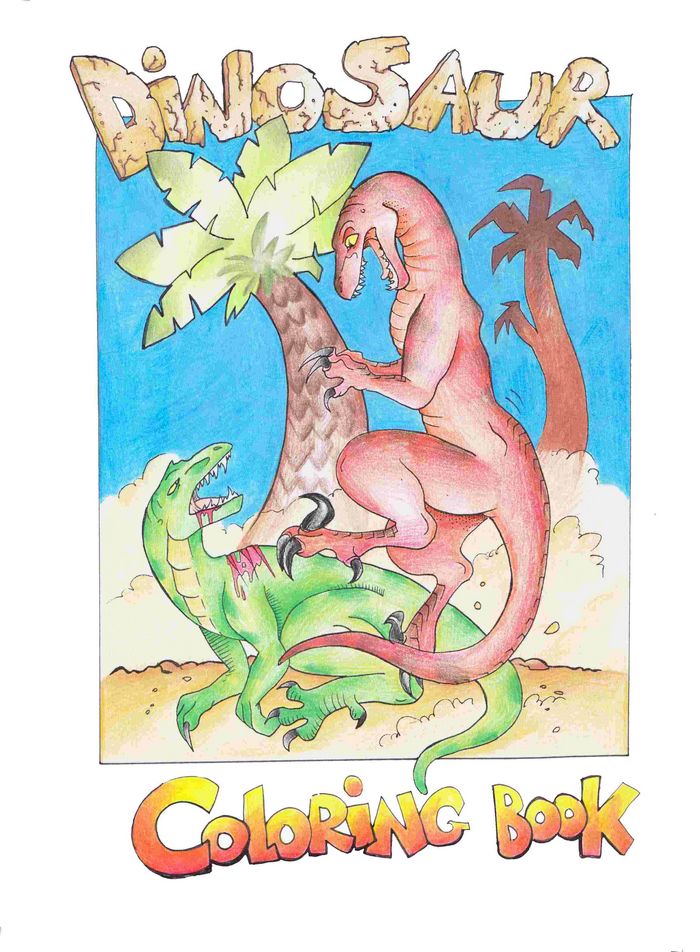Gideon Mantell - the man who discovered
Iguanodon, the second dinosaur ever found
Medical doctor, geologist, palaeontologist and ground-breaking thinker. His discovery of Iguanodon, the realisation that he had found something special, and his commitment to reconstructing and trying to understand the significance of the find ensures his position in the DinoZone Hall of Fame. It was he who kicked off the scientific study of dinosaurs which continues unabated to this day.
He was born in Lewes, Sussex, the fifth child of Thomas Mantell, a shoemaker. As a youth he explored pits and quarries in the surrounding district, bringing home ammonites, sea urchins, fish bones, corals and remains of dead animals.
At the age of 15 he secured an apprenticeship with a local surgeon which lasted for a period of five years. After that he taught himself anatomy and produced a book titled 'The Anatomy of Bones and the Circulation of Blood' with dozens of detailed drawings of skeletal features.
Elected as a Fellow of the Linnaean Society
He received his diploma as a Member of the Royal College of Surgeons in 1811. Although an exceptionally busy doctor, he found some time to go fossil hunting and geologising, bringing home fossil specimens from nearby marl pits and describing and identifying them into the early hours of the morning. His work got him elected as a Fellow of the Linnaean Society of London.
In 1816, he married Mary Ann Woodhouse, the 20-year-old daughter of one of his former patients who had died three years earlier.
Sensational discovery of an ichthyosaur
Mantell was inspired by that other amateur palaeontologist Mary Anning’s (of 'she sells sea shells on the sea shore' fame) sensational discovery of an ichthyosaur in the cliffs along the coast at Lyme Regis in Dorset. Perhaps there might have been a little competition between them, but for whatever reason, he immersed himself in the study of fossils which he found on his home turf. These fossils were preserved in the chalk Downs which underlie the region and are from the Upper Cretaceous (crete means chalk). By virtue of their occurrence within the chalk they were deduced to be of marine origin.
King George IV no less placed an order for four copies
Further scratchings around the local quarries led to a discovery in 1819 of land-based creatures – terrestrial fossils. These were later proven to come from the Lower Cretaceous. By 1820 he found some very large bones at Cuckfield and then Mary-Anne brought home some large teeth of an animal which he couldn’t identify. He at that time he published a book on the local geology and King George IV no less placed an order for four copies. This was all very encouraging, and emboldened, he took his discoveries to other scientists who dismissed his work. The eminent French anatomist, Georges Cuvier, thought the teeth belonged to a rhinoceros.
Mantell was laughed at
Back in Britain Mantell was laughed at for his ‘mistake’, but he was still convinced that the teeth had come from strata of Mesozoic age and after much work finally realised that they resembled those of the iguana, but were amazingly twenty times larger. By scaling up the body size according to the size of the teeth, he worked out that his strange creature had a body 60 feet (18 metres) in length.
What to call the new reptile?
He tried in vain to convince his peers that the fossils were from Mesozoic strata, by carefully studying the rock layers. William Buckland famously disputed Mantell's assertion, claiming that the teeth were from a fish – making trouble not only for Mantell but for himself – foolish remarks indeed. Through persistence, good science and hard work, Mantell proved that his theory was right, and then the only question was what to call his new reptile. His original thoughts were "Iguana-saurus" but after discussions with fellow scientists and naturalists settled on the name Iguanodon.
The rest of his life was filled with tragedy and pain.
Years later, Mantell had acquired enough fossil evidence to show that the dinosaur's forelimbs were much shorter than its hind legs, therefore proving they were not built like a mammal as claimed by Sir Richard Owen. Mantell went on to demonstrate that the fossil vertebrae, which Owen had attributed to a variety of different species, all belonged to Iguanodon. He also named a new genus of dinosaur called Hylaeosaurus and as a result became an authority on prehistoric reptiles. However, his later life was filled with tragedy and pain, not least of which was due to Richard Owen’s persecution of the man.
And seeing that you are here, grab yourself a copy of our free colouring book, which is full of wonderful dinosaurs and other Mesozoic creatures for you to bring back to life.



